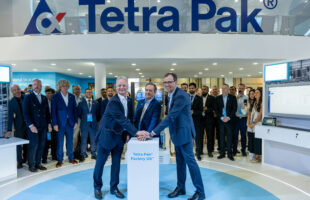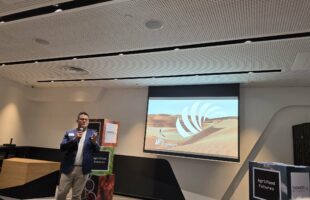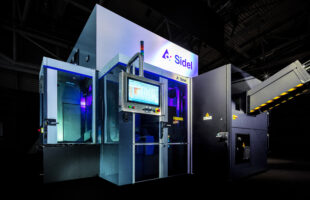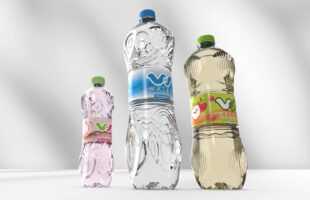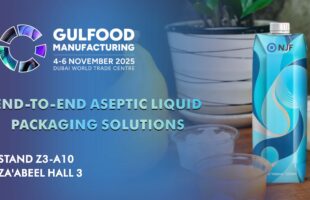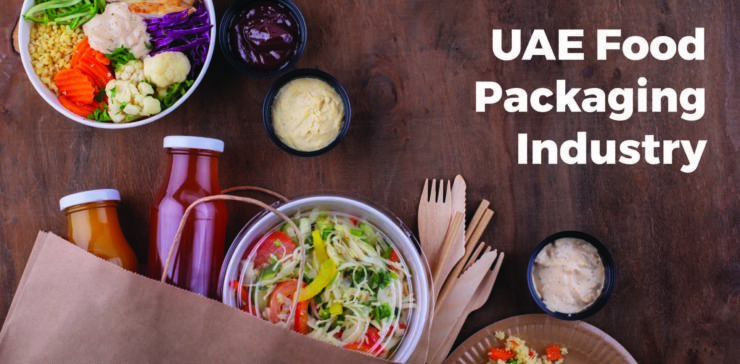
Courtesy of Ken Research
Food packaging plays a pivotal role in preserving food. The UAE food packaging market was valued at $2813.5 million in 2020 and is expected to reach $6193.16 million at a CAGR of 4.6 percent from 2021 to 2026. Dubai is going to lead the growth in this industry.
Rapid urbanization, which normally translates to increased consumer spending and production of consumer goods, will drive the forecasted growth in the UAE and the wider region. Major players in the market are Gulf East Paper and Plastic Industries LLC, Arabian Packaging (Al Ghurair Group), Amber Packaging Industries LLC, Rotopak LLC, and Hotpack Global.
Toxic byproducts of manufacturing the raw materials for food packaging are enormous
Food packaging depends on several factors. This includes product shelf-life, required temperature until delivery, containers suited for delivery, and product use.
For example, processed food needs multiple packaging layers and preservatives to keep the shelf life long. Many liquid beverages need plastic, glass, metal bottles, or cans to prevent spillage. The waste generated from food packaging is growing rapidly as biodegradable products are used only once.
Every form of food packaging utilizes nonrenewable resources like petroleum and minerals, which often generate emissions, including greenhouse gases that adversely affect the environment. The packaging of food is misinterpreted as an additional economic and environmental cost. It is rather a value addition for waste reduction. The alternate generation of ‘bioproducts’ which can be used multiple times, can be the new, much-needed breakthrough in this industry.
The trouble with sustainable food packaging
The next generation of the food packaging industry will help in the gradual transformation from a linear to a dynamic closed-loop economy. One of the latest trends in the industry right now is sustainable packaging. A customer makes the first impression about a food item through its packaging.
There has been a substantial shift towards eco-friendly, sustainable packaging, which should integrate the use of nanotechnology to increase the shelf life of products. Every person, organization, and business entity impacts the environment and can help in the ever-evolving dynamics. The food packaging market can get revolutionized with the introduction of reusable and recyclable products. The biggest challenge has been to make cost-effective recyclable products that can be reused.
An alternative new line must be started and upscaled for this ‘bio’ recyclable production. The use of plastic cannot be completely foregone as the price factor is also accountable. So, where paper packaging is more expensive, it is better to have plastic packaging as the waste of limited resources is an important factor that needs to be considered. Thus, sustainability and price efficiency will go hand-in-hand in reaching the pinnacle of this industry.
UAE food packaging industry is set for steady growth
According to Ken Research, the Covid-19 pandemic instigated the growth of e-commerce platforms and led to many significant developments in the food packaging industry.
SARS-CoV-2 has increased the importance of food packaging applications; we already know that packaging materials are important and that processing, preheating, and pasteurising or sterilising various food products is necessary to reduce the danger of SARS-CoV-2 contamination of food. This has become a $900 billion industry with growth fueled by the Covid-19 pandemic. Consumers and businesses are pushing manufacturers towards zero waste compliance and sustainability, which is a top development priority in the UAE.
In the distribution channel, the food can get contaminated without proper packaging as there is a brief timeline between origin and distribution. The development of novel food packaging is lucrative and has brought convenience to customers. Food packaging not only caters to the customers’ needs but also considers the needs of material scientists, food chemists, and microbiologists.
Recent studies on strawberries using active packaging, with and without CO2 absorbers, maintained the fruit quality and significantly improved storage life. Nanotechnology applications can monitor food deterioration by sensors. The development of the 3MTM monitor marked indicator has gained momentum in this area.
Even polymeric materials are fairly varied and versatile, with a wide range of uses. They can be crystalline or essentially amorphous, flexible or rigid, translucent or opaque, thermosetting, or thermoplastic (heat-sealable). They can be created as films or in various shapes and sizes as containers. For the use of cutting-edge packaging technologies like modified atmosphere (MAP), active, and “intelligent” packaging, they are exceptionally well suited. Food packaging has grown increasingly demanding to provide consumers with high-quality goods that meet strict standards, including material performance and prolonged shelf life.
Developments such as smart packaging that could bring active compounds, outstanding gas or vapour barrier properties, and biodegradability to reduce plastic waste disposal represent an additional asset in innovative food packaging.


